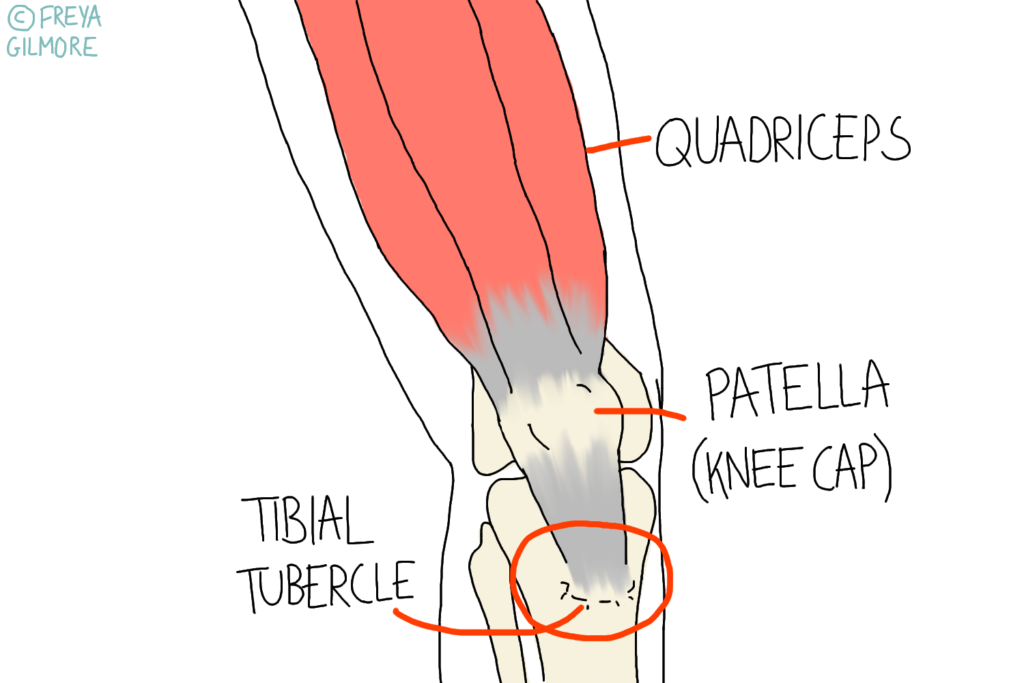Osgood Schlatters disease (OSD) is a common ailment in adolescents, causing pain and swelling just below the knee cap (patella). “Disease” makes it sound more scary than it is: it’s much more of a mechanical issue and can typically be managed with lifestyle changes.

Basics of Osgood Schlatters
Before we finish growing, our bones have soft areas within them called growth plates. These are like seams of cartilage, from which bone continues to develop. They ossify (turn to bone) themselves at predictable ages, and ultimately it is this ossification that puts a stop to OSD. The growth plate in the shin bone (tibia) is where the strong quadriceps muscles attach. In a perfect storm, a child whose growth plate is still active, and who demands a lot of these muscles, may develop symptoms of OSD. Athletic children, particularly those who do a lot of running or jumping, put extra pressure on the growth plate. This can be exacerbated by a growth spurt. The muscles might be relatively short for a lengthening thigh bone for a while, which adds further pressure to the growth plate.
The pull on the growth plate can cause:
- tenderness
- a soft swelling
- pain on activity
Who Does it Affect?
Because boys and girls develop at different rates, the affected demographics are different. Boys may be symptomatic between 10-15yo, whereas girls are more likely to be affected between 8-14. After this window, the growth plate turns to bone, which means the lump may also become bone. This usually doesn’t present a problem, and often it’s just an incidental finding in clinic for someone who only vaguely remembers ever having had symptoms. Sometimes the pain does persist beyond ossification age, but this is not the case for most people.
If you or your child do have continuing pain, your osteopath can look at the leg to see if there is still an excessive demand on the quadriceps tendon.
Similarly, the irritation of a pull on a growth plate (apophysitis) can affect other areas of the body. When the Achilles tendon causes apophysitis in the heel, it is known as Sever’s disease. This condition also affects children in the 10-13yo window. Continuing heel pain beyond this window is worth investigating. Adults with symptoms similar to Sever’s disease, especially when it coincides with back pain, would benefit from an assessment with rheumatology in mind.
Managing Osgood Schlatters
The acute symptoms usually respond well to a cold compress and rest. Of course, asking a sporty child to rest is not always an effective management strategy! At your osteopathy appointment, we can discuss their current stretching routine around sport, and adapt as needed. It may also be helpful to stretch on a daily basis, regardless of the day’s exercise schedule. Treatment to stretch and relax the quads can give some immediate relief. Looking to the neighbouring joints to see if anything could move better can also relieve tension on the knee.
Click here to make an appointment for your child’s Osgood Schlatters with Beverley
